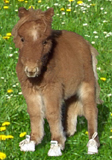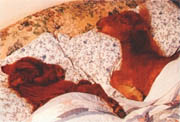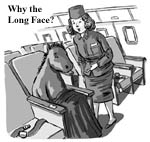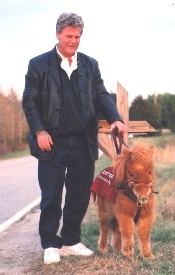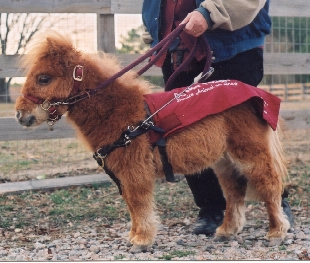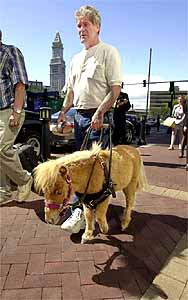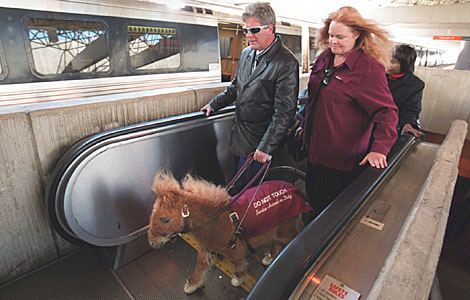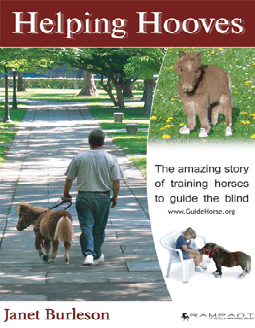March 17, 2004, 6:53PM
Plenty of horse sense makes pony a proven leader
By MARY VUONG
Copyright 2004 Houston Chronicle
Since Pal arrived in into town, he's been to Wal-Mart,
Lowe's, restaurants, an elementary school and the Houston
Livestock Show and Rodeo.
Not bad for a horse wandering about in baby shoes.
Pal is the first guide horse in Texas, say Janet and Don
Burleson, who run the Guide Horse Foundation in Kittrell, N.C.
The Burlesons were here last week3/9 to follow up with Donna
Grahmann, a Magnolia resident and the horse's owner since
December.
At 157 pounds and 29 1/2 inches tall, Pal is the fourth
miniature horse the couple has trained to function as a guide
animal.dog. He obeys 23 voice commands, detects changes in
elevation, finds doorways and watches for potential dangers. He
wears the baby-sized athletic shoes for added traction on waxed
floors.
Visiting downtown Houston last week, Pal exuded great calm
amid the noise, traffic and bewildered stares from passers-by.But
"when we got him right off the ranch," his trainers say, "he was
wild as a deer."
The greatest advantage to using horses over dogs is
longevity. Horses they can live last up to three times as long,
longer, Don Burleson says. Horses also have eyes on the sides of
their heads that allow them to see nearly 360 degrees.
But "not every horse has what it takes," notes Janet
Burleson, a retired professional horse trainer.
Each needs to be "100 percent proficient," her husband adds.
Especially when it comes to "intelligent disobedience." A
horse must be smart enough to prevent its owner from entering an
elevator if the cage is nowhere in sight or crossing the street
if a car is heading toward them despite a walk signal to
proceed.
It takes 400 to 600 hours to teach a horse to lead the blind
and visually impaired. The Burlesons say that's less time than
it takes to train dogs, which require puppy socialization
skills.
The first horse they trained was named Twinkie. During trips
to a flea market in Raleigh, the couple began noticing that Don
Burleson's personal pet would steer them clear of hazards such
as electrical cords.
They kept Twinkie but placed the next two horses in Maine and
Pennsylvania. The nonprofit foundation provides gives the
animals at no charge to the blind and visually impaired, and
operates on donations.
Eighty people are on the waiting list, but the trainers are
in no rush to match them with horses.
"We still consider it experimental," Janet Burleson says."We
haven't encouraged a great many people to try it."
Grahmann seems a natural fit. She's a former competitive
rider and also owns numerous animals, including a miniature
horse she acquired to keep Pal her guide company.
"As long as I'm alive and (Pal's) still able to work," she
says, "we'll be together."
For more information on the guide horse program, visit
www.guidehorse.org
|
